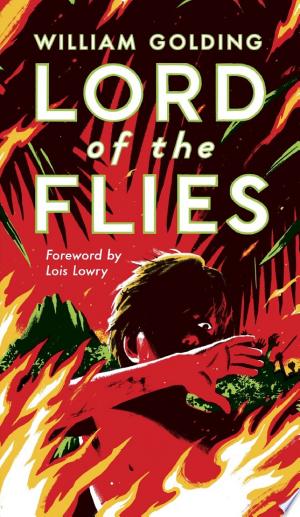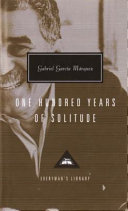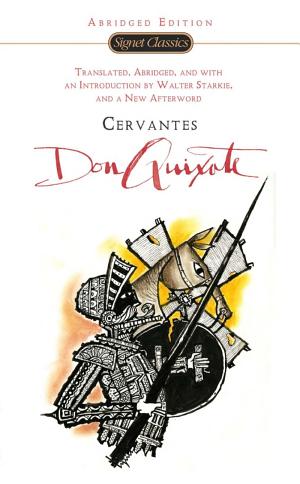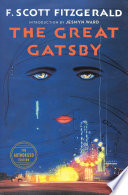"Lord of the Flies" Summary
classics | 336 pages | Published in 2016
William Golding’s unforgettable classic of boyhood adventure and the savagery of humanity comes to Penguin Classics in a stunning Graphic Deluxe Edition with a new foreword by Lois Lowry As provocative today as when it was first published in 1954, Lord of the Flies continues to ignite passionate debate with its startling, brutal portrait of human nature. William Golding’s compelling story about a group of very ordinary boys marooned on a coral island has been labeled a parable, an allegory, a myth, a morality tale, a parody, a political treatise, and even a vision of the apocalypse. But above all, it has earned its place as one of the indisputable classics of the twentieth century for readers of any age. This Penguin Classics Graphic Deluxe Edition features an array of special features to supplement the novel, including a foreword by Lois Lowry, an introduction by Stephen King, an essay by E. M. Forster, an essay on teaching and reading the novel and suggestions for further exploration by scholar Jennifer Buehler, and an extended note by E. L. Epstein, the publisher of the first American paperback edition of Lord of the Flies. For more than seventy years, Penguin has been the leading publisher of classic literature in the English-speaking world. With more than 1,700 titles, Penguin Classics represents a global bookshelf of the best works throughout history and across genres and disciplines. Readers trust the series to provide authoritative texts enhanced by introductions and notes by distinguished scholars and contemporary authors, as well as up-to-date translations by award-winning translators.
| ISBN_13: | 9781101158104 |
| ISBN_10: | 1101158107 |
Estimated read time: 7 min read
One Sentence Summary
A group of boys stranded on an uninhabited island struggle to maintain order and civilization as they descend into chaos and savagery.
Table of Contents
Introduction
In the classic novel "Lord of the Flies" by William Golding, a group of British schoolboys find themselves stranded on an uninhabited island after their plane crashes. As they struggle to survive and create a functioning society, the boys' primitive instincts and the inherent evil within them begins to emerge. This thought-provoking allegory explores themes of civilization, power, and the human capacity for violence.
Brief Synopsis
The story begins with a group of boys being evacuated from war-torn Britain during World War II. Their plane crashes, leaving them stranded on an uninhabited island. The boys, ranging in age from six to twelve, gather together and elect a leader named Ralph. Ralph establishes rules and tasks the boys with building shelters, maintaining a signal fire, and establishing order.
However, another boy named Jack becomes increasingly power-hungry and rebels against Ralph's leadership. Jack forms his own tribe of hunters and becomes consumed by his desire for control and dominance over the island. The other boys are divided between Ralph's group and Jack's, creating a growing tension between the two factions.
As the boys succumb to their primitive instincts, they begin to behave savagely and engage in acts of violence. The conch shell, which symbolizes order and civilization, loses its power as chaos ensues. The boys descend into tribalism and engage in primitive rituals and violent hunts.
Amidst the chaos, the boys become convinced that a terrifying beast inhabits the island. Their fear fuels their descent into madness, and they even sacrifice one boy, believing that it will appease the beast. Simon, a kind and perceptive boy, discovers that the beast is actually a dead parachutist, but is tragically killed by the other boys when he attempts to share this knowledge.
The story reaches its climax when Ralph is hunted and persecuted by Jack and his tribe. As the island burns uncontrollably, a naval officer spots the smoke and comes to the rescue. The boys are rescued from the island, but their experience has left them scarred and forever changed.
Main Characters
| Character | Description |
|---|---|
| Ralph | The elected leader who strives to maintain order and establish a civilized society on the island. |
| Jack | The antagonist who becomes obsessed with power and control, leading his own tribe of hunters. |
| Piggy | Ralph's loyal friend and advisor, who is mocked and marginalized by the other boys for his intellect. |
| Simon | A compassionate and spiritual boy who is ultimately killed by the other boys in a moment of hysteria. |
| Roger | Jack's right-hand man, who revels in violence and becomes increasingly sadistic. |
Summary of Story Points
Chapter 1: The Sound of the Shell
- The boys gather on the beach and elect Ralph as their leader.
- Ralph establishes rules and tasks the boys with building shelters and maintaining a signal fire.
- Jack and his choir boys become hunters.
Chapter 2: Fire on the Mountain
- Ralph focuses on maintaining the signal fire, while Jack becomes increasingly obsessed with hunting.
- The boys fail to keep the fire going, missing their chance to be rescued.
Chapter 3: Huts on the Beach
- The boys struggle to build shelters, but Ralph remains determined to maintain order.
- Jack and his hunters begin to neglect their duties and become more savage.
Chapter 4: Painted Faces and Long Hair
- The boys' appearance begins to deteriorate as they become more feral.
- Simon discovers a peaceful clearing in the jungle.
Chapter 5: Beast from Water
- The boys fear the potential existence of a beast on the island.
- The tension between Ralph and Jack escalates.
Chapter 6: Beast from Air
- The boys mistake a dead parachutist for the beast, further fueling their fear.
- Simon discovers the truth about the "beast."
Chapter 7: Shadows and Tall Trees
- Jack and his tribe become more aggressive, stealing fire from Ralph's group.
- Simon is killed by the boys during a chaotic scene on the beach.
Chapter 8: Gift for the Darkness
- The boys' descent into savagery continues as they descend upon Samneric, threatening to harm them.
- Jack and his tribe claim control over the island's only water source.
Chapter 9: A View to a Death
- Ralph and Piggy confront Jack at Castle Rock.
- Piggy is killed when Roger pushes a boulder off a cliff onto him.
Chapter 10: The Shell and the Glasses
- Jack's tribe raids Ralph's camp and steals Piggy's glasses, leaving Ralph's group vulnerable.
- Ralph and his remaining followers are forced to flee.
Chapter 11: Castle Rock
- Ralph is hunted by Jack and his tribe, who set the island ablaze in their pursuit.
- Amidst the chaos, a naval officer arrives to rescue the boys.
Main Events
- The election of Ralph as the leader of the boys.
- The formation of Jack's tribe and the divergence of loyalties.
- The descent into savagery and the breakdown of the boys' societal order.
- The discovery of the "beast" and the subsequent violence and sacrifice that follow.
- The hunt for Ralph and the destruction of the island.
- The rescue of the boys by a naval officer.
Themes and Insights
- Civilization vs. Savagery: "Lord of the Flies" explores the inherent tension between these two opposing forces within human nature. The boys initially attempt to establish order and create a functioning society, but as their circumstances deteriorate, they descend into a state of primitive savagery.
- Power and Control: The novel explores the allure of power and how it can corrupt individuals. Jack's hunger for control drives him to rebel against Ralph and establish his own tribe, leading to escalating violence.
- Loss of Innocence: The novel paints a disturbing picture of the loss of innocence as the boys' civilization crumbles and they engage in increasingly violent and brutal behavior. The boys, previously innocent and hopeful, succumb to their primitive instincts.
- The Nature of Evil: "Lord of the Flies" delves into the darkness that resides within humanity. The boys' descent into savagery reveals the innate capacity for violence and the absence of moral restraint when removed from civilization.
Reader's Takeaway
"Lord of the Flies" offers readers a harrowing examination of human nature and the fragility of civilization. The novel serves as a cautionary tale, reminding us of the potential for darkness within ourselves and the importance of maintaining the values of order, morality, and compassion.
Conclusion
"Lord of the Flies" is a powerful and thought-provoking exploration of human nature and the delicate balance between civilization and savagery. Through its vivid storytelling and memorable characters, the novel confronts readers with the disturbing truths about the potential for evil within all of us. William Golding's work continues to captivate and challenge readers, urging them to reflect on the fragility of society and the role of power in shaping human behavior.
Lord of the Flies FAQ
What is the main theme of Lord of the Flies?
Who are the main characters in Lord of the Flies?
What is the significance of the 'beast' in the story?
What does the conch symbolize in Lord of the Flies?
What is the role of the naval officer at the end of the story?





